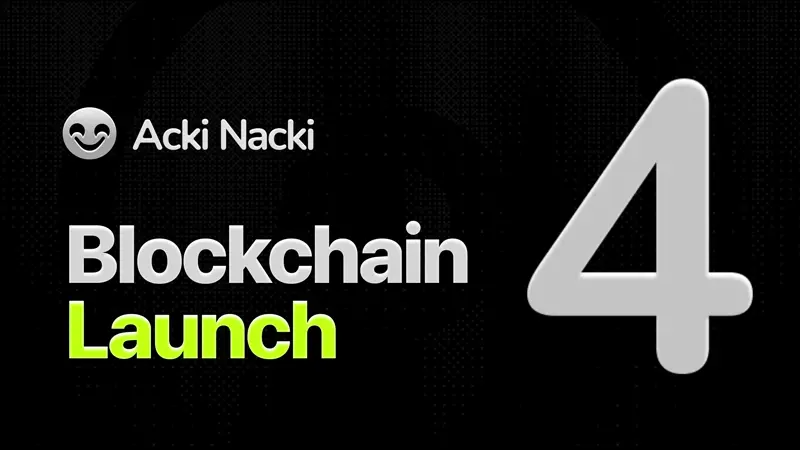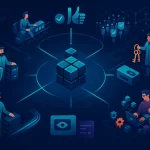Intro: You Are the Interface
You walk into your house. You’re cold. Without a word, without a button press, the thermostat adjusts. The lights soften. Your smart speaker doesn’t ask if you’re okay, it already knows. Not because you told it, but because your body did.
This isn’t sci-fi. This is BaaS, Body as a Service.
We’ve spent decades making machines understand our commands. What if the future isn’t about talking to technology, but about feeling with it?
From Software to Wetware
Let’s define it: BaaS refers to the use of real-time biometric and biofeedback data from human bodies to influence digital or environmental systems.
Not to be confused with “Biometrics” as authentication, this goes further. Think of it as the next evolution in the Internet of Things, where you are the “thing”, a node in a data mesh that’s always sensing, adapting, influencing.
We’ve digitized thoughts (search), attention (ads), and emotion (AI art). The last great frontier? The body, not just as a vessel, but as an API.
The Stack: What Makes BaaS Possible?
To get specific, a BaaS architecture could include:
-
Input Layer: Biometric wearables (HR monitors, body temp sensors, EEG, galvanic skin response, eye tracking, etc.)
-
Middleware / Logic: AI/ML systems that process signals into context (cold? excited? stressed? bored?)
-
Output Layer: Environmental actuators (lighting, HVAC, music, VR interfaces), digital agents (chatbots, UIs), or decentralized feedback loops (DAOs, smart contracts).
Now here’s the kicker: In a Web3 context, this could live on a decentralized protocol. Imagine a “bioledger” where anonymized bodily states feed a collective network that adapts for the group, not just the individual.
Use Case 1: Responsive Environments
Obvious first step, smart homes. But let’s go further.
Offices:
-
Open-plan workspace reads collective stress level from wearable data → increases light warmth, activates noise-dampening, softens music.
-
Meeting rooms use aggregated HRV data to monitor engagement, subtly prompting facilitators if attention dips.
Public Spaces:
-
A library senses a rising average tension level → dims lights and lowers HVAC fans.
-
On a subway, riders’ aggregated stress and body temperature inform dynamic seating layout or airflow changes.
Here, the body isn’t passive, it becomes a democratic signal for collective comfort.
Use Case 2: Gaming & Entertainment
BaaS could fundamentally change how we experience media.
-
A horror game that detects if you’re genuinely scared and dynamically adjusts pacing.
-
A concert VR stream that reacts to your emotional state, intensifying visuals if you’re bored, calming them if overwhelmed.
-
Storytelling becomes a feedback loop. The story doesn’t just unfold to you, it unfolds with you.
We move from static content to empathetic content.
Use Case 3: Health, but not How You Think
Sure, BaaS could track your vitals. But what if it did more?
-
A social media platform that can detect when you’re emotionally vulnerable (from cortisol or HRV), and delays showing potentially harmful content.
-
A health DAO that uses passive biometric data to recommend decentralized wellness programs, with token incentives to participate or rest.
-
Insurance models that adjust premiums in real-time based on verified rest, hydration, stress resilience, not arbitrary questionnaires.
Your body becomes both the oracle and the validator.
Use Case 4: Consent-Based Marketing
This one’s wild.
-
You walk into a store. You’re subconsciously interested in a jacket. Your body betrays it, a slight dilation in pupils, a flicker in brainwave activity.
-
Instead of spamming you, a BaaS-integrated system logs that signal, only if you’ve pre-approved sharing your biodata.
-
The next day, you get a discount code in your wallet. Not because you were tracked creepily, but because you consented to share part of your embodied attention in exchange for value.
This flips surveillance capitalism into embodied capitalism, where your bio-signals are an asset you own and lease.
Now, the Blockchain Angle
Imagine coupling BaaS with a protocol like Acki Nacki. Why?
Acki Nacki focuses on fair, probabilistic Proof-of-Stake with mobile verifiers, lightweight participants that don’t need heavy infrastructure. Now picture a world where your body is one of those verifiers.
-
You stake your biometric data in real time.
-
It gets validated in short epochs (e.g., every 10 minutes, like a heartbeat).
-
Rewards (tokens or access) are issued if your data contributes to verified outcomes, such as improved communal energy efficiency or content feedback loops.
In this, the body becomes both a node and a validator, verified via probabilistic consensus.
But Is It Ethical?
Yeah. This is where it gets messy.
What happens when your heart rate becomes public property? When your sleep patterns are sold on-chain? The same way we give up GPS or attention to tech now, could we sell off our most intimate data for dopamine hits, discounts, or digital clout?
That’s why BaaS must start with consent architecture:
-
Default opt-out, not opt-in.
-
Fully anonymized signal aggregation.
-
Bio-tokenization where you hold your own keys to your biodata.
Maybe something like a personal BaaS vault, like a biometric MetaMask. You choose what’s streamed, when, and to whom.
Future-Spec: The Bio-DAO
Extrapolate this further. Imagine a Bio-DAO, a collective of users who pool their biometric data (on their own terms) to influence larger systems.
-
Want your office to install better HVAC? Prove the group’s discomfort with validated biofeedback data.
-
Need funding for a meditation park in your neighborhood? Show a local spike in cortisol and anxiety, anonymized and plotted across the week.
Data becomes voting power. But not your clicks. Your pulse.
Final Thoughts: The Body is the Network
We’ve spent so long trying to dominate our environments, push buttons, script routines, automate tasks.
What if the future is the inverse?
What if technology becomes so advanced that it falls away, and all that remains is our feeling, refined, measured, respectfully understood?
BaaS isn’t about hacking the body. It’s about listening to it. Giving it a digital voice. Letting the living participate in the digital, not by logging in, but by being.
Your heart is the signal. Your body is the proof. The future is ambient, embodied, and waiting.
Would you stream your feelings for tokens? Would you stake your stress for influence?
Let your body decide.




